For years we’ve been hearing about the retail apocalypse and how brick-and-mortar stores will one day go the way of pay phones. But with the coming of age of Gen Z, which according to the US Census now makes up 24.3 percent of the population (greater than any previous generation) comes a renewed interest in brick-and-mortar retail. A study by management consulting firm A.T. Kearney found 81 percent of Gen Z shoppers prefer to purchase in stores and 73 percent said they like to discover new products in stores. While this is all good news for today’s brick-and-mortar retailers, those retailers need to understand that in order for a store environment to be successful, it must grow and evolve at the same pace as their customers.
The Astound Insights team at Astound wanted to see if and how stores were upping the ante, so earlier this year we set out on the streets of New York in search of answers. We were excited about what we found and hope our takeaways provide a meaningful roadmap for you and the future of your business. We’re also mindful that the current global health crisis related to COVID-19 is likely to dramatically curb in-store shopping in the near future. Consider this your guide to what is most likely to get consumers back in shopping mode soon.
Create a Unique Experience That’s Ever Evolving

Today’s customers are accustomed to shopping how they want, when they want, and where they want and thirst for innovation and individualized offerings. They are overwhelmed by daily life and inundated with all the choices that need to be made on a daily basis. Retailers can help cut through the clutter by providing unique shopping experiences—curated shops or vignettes that not only help to differentiate the company from their competitors but also present products in a more creative, appealing, and streamlined way. Since the items in curated areas are hand selected and edited, the assortment can better mirror shoppers’ needs. Item selection also changes frequently, continually creating new shopping experiences.
We were encouraged to see not only curated areas within merchants’ stores but also retailers whose business was built solely around curation and collaborations. Forty Five Ten, Neighborhood Goods, and The Conservatory are examples of the latter. Forty Five Ten brings high-end designers and small lesser-known brands and designers together in a noncontiguous floor plan, creating a uniquely interesting experience. The Conservatory carries a collection of brands and designers who believe in sustainability, quality, and lasting value and is more boutique in feel. Puma, on the other hand, has dedicated an area solely to artist collaborations that changes frequently. Some of the items are available online, in limited quantities, but the bulk of the collections are showcased in Puma’s flagship store.
Home In on Localization to Further Personalize the Journey
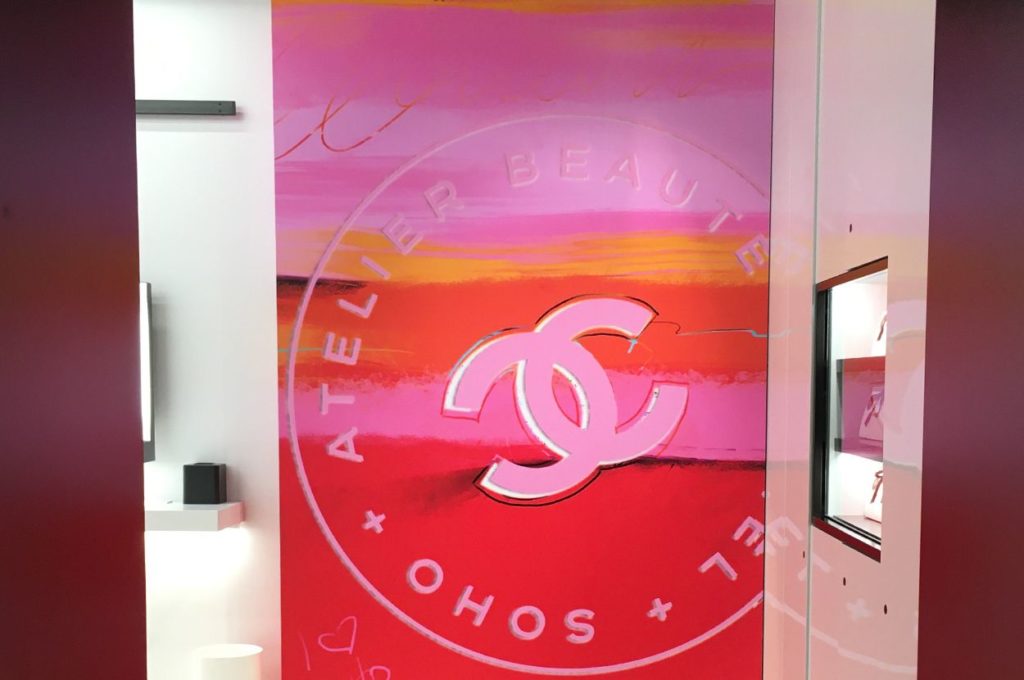
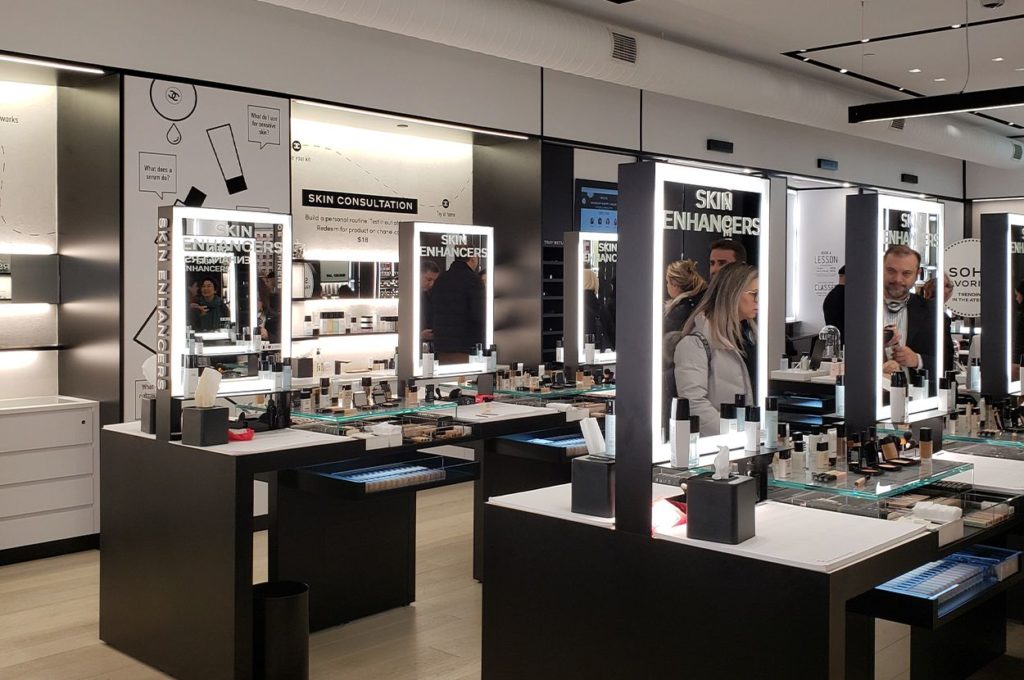
In a time of global uncertainty, retail consolidations, homogenized assortments, and Amazon, people crave individuality along with a sense of belonging and the ability to make a difference, bringing about a renewed interest in supporting “local”—whether in business, products, or interests.
We were excited to see retailers big and small embracing this initiative. Amazon itself was one of the first to respond to this consumer preference when, in 2018, the company debuted Amazon 4-star at Soho. The brick-and-mortar store sells the most popular and top-rated items from Amazon’s website along with items trending in the city, which are smartly signed “top-selling in NYC,” helping to guide shopping choices of like-minded customers. Atelier Beauté Chanel, a first-of-its-kind, fully immersive retail experience in which the focus is on the encounter and not the sale, not only calls out local Soho favorites currently trending in the atelier but goes a step further, hosting “makeup happy hours.” People in the community get the opportunity to come together in a relaxed setting to socialize (which includes champagne) while learning new beauty techniques and shopping at their leisure.
Neighborhood Goods, in Chelsea Market, takes an even more creative approach to reinventing the physical store. The retailer has created a curated space consisting of established brands, local favorites, and digitally native brands in which the assortment and shopping experience is continually changing and evolving. Brands are featured for only one to three months, appealing to the younger generation of shoppers who crave newness and discovery as well as those seeking a wider array of unique products. By continually changing the assortment and experience, Neighborhood Goods is setting itself apart from the competition and creating a more local, nonconventional shopping experience.
Put the Fun Back into the Fundamentals of Retail
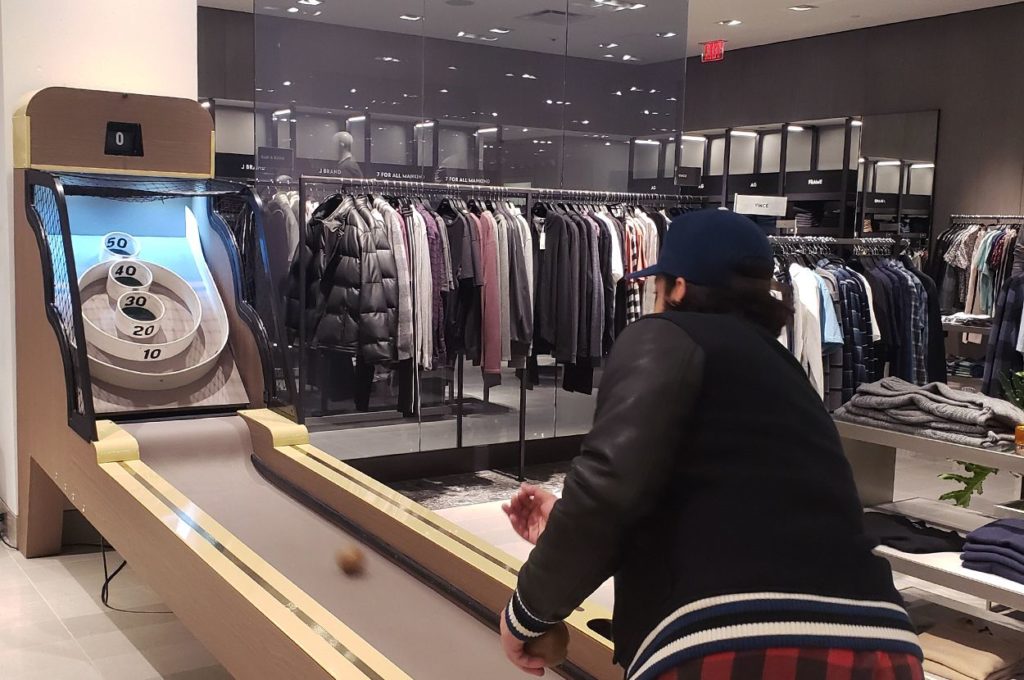
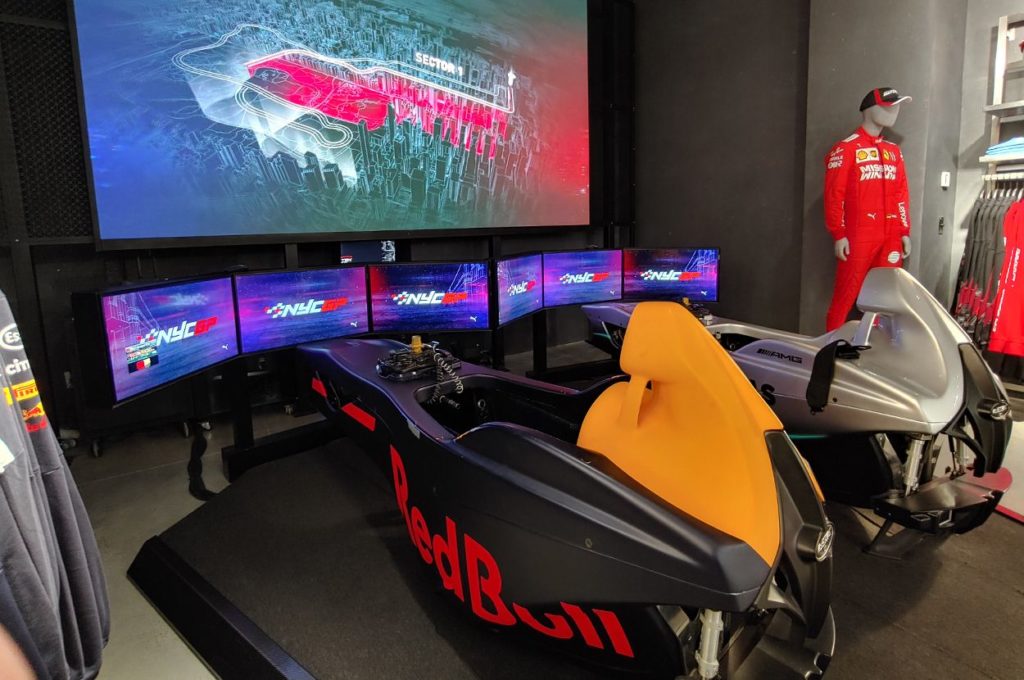
Gone are the days of putting product on a fixture, sitting back, and watching it sell. Today’s retail is all about the experience—think shop, eat, relax, and recharge—and we were happy to see a wide variety of merchants embracing this strategy.
The new 18,000-square-foot Puma store on 5th Avenue is the best example we encountered of a full 360-degree retail experience. Upon entering the store, guests are welcomed with large graphics and lively music, creating a fun and exciting vibe. The second floor is the Holy Grail of experiential retail. Try out soccer shoes while running drills in the skill cube virtual reality soccer simulator, and even see how you scored on the leaderboard posted just outside. Is the need for speed more your thing? Head to the motorsport area, where you’ll find an authentic F1 race car simulator in the midst of product displays. Race through the streets of New York, and then celebrate your victory by purchasing a new Porsche Design racing jacket. If you don’t want to wear it now, order the jacket from a kiosk and get expedited shipping at no additional charge. Guests are provided an opportunity to refresh and refuel at the coffee bar, strategically located in the center of the floor near the escalators.
It was also refreshing to see the new Neiman Marcus store, in Hudson Yards, was built with the customer experience in mind. An inviting seating area is incorporated on each floor, where customers are encouraged to modify the store’s music playlist (think digital jukebox) via large digital screens or by downloading the Rockbot app in order to create a more personalized shopping environment. The luxury fashion brand has also strategically outfitted the men’s area of the store with interactive arcade games (Skee-all and Pac-Man) as well as a bar. Customers are free to take beverages onto the selling floor as they peruse the assortment of products. On our visit, we witnessed two younger males just hanging out, chatting, playing Skee-all, and sipping adult cocktails, surrounded by clothing. My guess is more men would shop if all experiences were like this!
Establish a Customer-First Mindset
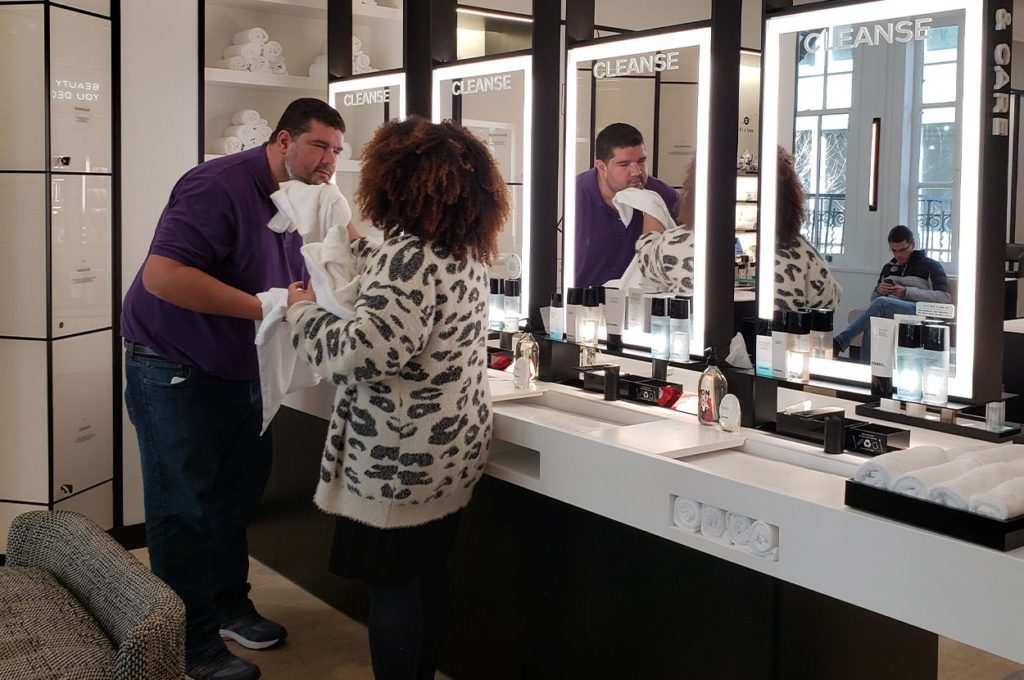
Customer expectations are changing. Increased competition and evolving technologies put the customer in the driver’s seat, and merchants must creatively bridge the gap between digital and physical while meeting customer needs.
It’s clear upon arriving at Atelier Beauté Chanel that the customer always comes first. This fully immersive experience is focused on the encounter and not the sale. Visitors are encouraged to leave all personal belongings in the sleek lockers provided and experience the products unencumbered; house rules advise you to “take only your phone”—a sign of the times. The space is clean and bright, and it exudes the Chanel brand. It’s divided into different beauty sections (cleanse, care, face, lips, and so forth) where visitors can try skincare products and experiment with colors in the soft glow of diffused lighting. Everything you need is provided, including inks, mirrors, stools, towels, applicators, and makeup remover. The lip bar provides small personal samples in recyclable containers, beautifully arranged for the perfect Instagram shot and ready for customers to try.
The brand’s atelier parfum room is an interactive exercise in awakening the senses. Upon entering a dark room, you are directed to “blindly” sniff scents. The darkness heightens your sense of smell, offering an opportunity to discover favorite scents in a new, creative way, stripped of all preconceived notions and product marketing. Experimentation is integral to the overall experience here. Associates and technology take a back seat to product discovery (house rules also state “do it yourself; we’re here if you need us but you should navigate the Atelier on your own”). The associates blend in with the guests, which makes them more approachable—a stark contrast to the stereotypical pushy department store cosmetic associate of the past. Visitors “check in” upon entry and create an online profile on their mobile devices; customers place items for purchase in their online cart, bridging the digital with the physical store. Checkout is via customers’ smartphones, with pickup alerts arriving via text message as well as appearing on a digital sign placed near a pickup window en route to the exit.
Our next stop was Ruti, a small, intimate women’s ready-to-wear boutique featuring limited-edition and private-label items. Facial recognition is built into the store experience, which links to Ruti’s network of stores and its loyalty program. The true experience comes after customers have made an initial purchase and opt in to be added to the store’s database; their photo, shopping habits, and style preferences (including items tried on but not purchased) are stored. On subsequent visits to the retailer, the store’s cameras will identify the shopper as a repeat customer, instantly retrieving her shopping history and profile and presenting them to store associates, who can accurately offer style and size assistance. Talk about the ultimate tool in clienteling.
While visiting numerous store locations, we were happy to see so many merchants letting customers shop how they wanted and when they wanted, either self-assisted or with the help of an associate. From smart mirrors in fitting rooms (Puma, Mango, Neiman Marcus) that allow customers to ask for help without leaving the comfort of the fitting room, to self checkout through the shopper’s own smartphone (Stance, Neighborhood Goods, Amazon Go, Atelier Beauté Chanel), customer experience is definitely top of mind. Even QR codes smartly printed on product hang tags (Lululemon, Puma) help provide additional product information in the absence of a sales associate. But remember that technology alone can never replace a well-staffed store; there needs to be a balance of both.
Incorporate Brand Initiatives into all Aspects of Your Business
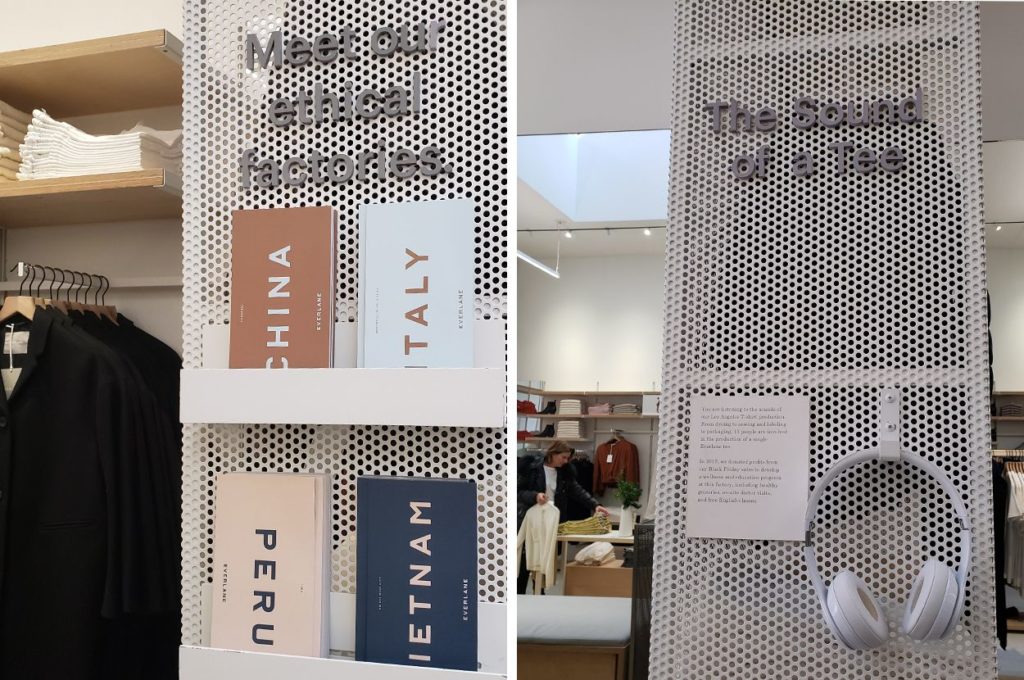
2020 heralds the age of truth and transparency. Consumers are stressed by frequent data breaches, news of global warming, and concerns about the ethical treatment of workers, for starters. More than ever, shoppers crave information about the companies with which they are conducting business, and if trust erodes, so does their loyalty. A wide variety of brands and retailers are competing for customer attention. Merchants must be transparent about their values and beliefs at every shopper touchpoint to gain consumer trust and business long-term.
Two of the stores we visited, Everlane and The North Face, clearly show they are leading this charge. Everlane’s storefront is completely glass, playing off the retailer’s brand initiative of transparency in how and where its clothing is made. Literature, signs, hang tags, and even a pair of headphones humming with the sounds of a T-shirt being produced in Everlane’s Los Angeles factory fill the store, again reinforcing the brand's commitment to being open and honest and giving shoppers a real education on the origins of the product, the brand, and all that it stands for.
With The North Face, the scent of pine (which is piped in) hits your senses the minute you walk through the door, and you are immediately transported to the outdoors. The store is built with sustainability in mind (reclaimed wood and steel), just like the products they sell. The fabric technology is on display as well, educating shoppers on the production and benefits of the fibers. (Did you know all the down in Northface coats and sleeping bags is 100 percent responsibly sourced?) Iconic products are dotted strategically throughout the store, archived in museum-like fixtures, adding to the brand story.
And perhaps “brand story” is the best way to describe the foundation of all of these experiences—each of which allows the consumer to briefly live the narrative that these brands, as an adjunct to their products, are so very eager to sell.